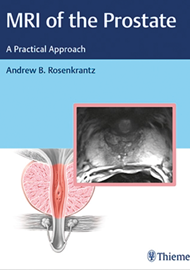The MRI is a non-negotiable part of prostate cancer diagnosis and management. As a result, this book is an essential. This nicely illustrated and well written account covers aspects ranging from MRI protocols, through Prostate Imaging Reporting and Data System (PI-RADS) scoring to more recent innovations in the field of positron emission tomography–magnetic resonance imaging (PET / MRI) scanning.
All of the chapters are well placed for the urological surgeon (and assume no specialist radiological knowledge). Even in those chapters where the confidant urologist might claim a comparative knowledge to his radiology colleagues – there are surprises. PI-RADS scoring in transition zone lesions was a particularly enlightening aspect of the chapter on reporting. Post-treatment follow-up and assessment using MRI covered new ground for me as did the degree to which MRI scanning has become pivotal in active surveillance protocols. The extent to which an MRI of the prostate currently dictates surgical planning is perhaps the best covered of the sections (although could have done with a little more emphasis in the book as a whole). At a time when so much depends on the MRI imaging of the prostate this text will allow the urological surgeon to discuss on equal terms some of the decisions that are based on imaging alone and as such contribute more directly to the imaging-led decision making progress.





